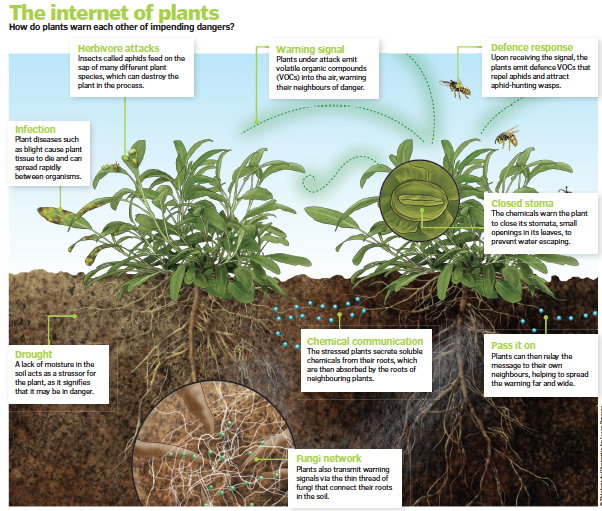Can plants communicate?
Discover the secret signals plants send to each other on the wood wide web
Just as we have many different methods for staying in touch with friends, plants have their own ways of communicating with each other. The main purpose for this is to help each other out, warning nearby plants of approaching dangers, such as insects, infections or drought so that they can take appropriate action. One method they use to do this is to emit invisible volatile organic compounds (VOCs) into the air. Other plants can then detect these compounds and know to defend themselves, or signal for help. Another method is below ground, and enlists the help of fungi. Beneath the mushrooms on the surface is a mass of thin threads called mycelium. These threads link the roots of different plants, allowing them to transfer compounds and communicate a specific message. The final way plants talk to each other is by secreting chemicals through their roots, which diffuse through the soil and are picked up by other plants, alerting them to danger. This complex plant communication network has been named the ‘wood wide web’ by biologists, but like our own version of the internet, it has a dark side. Some plants use mycelium to steal carbon from each other, while others use it as a method of attack, delivering toxic chemicals along the fungal threads to inhibit the growth of their competition.

For more information about science and technology, visit our website now. If you have a tablet or smartphone, you can also download the latest digital version onto your iOS or Android device. To make sure you never miss an issue of How It Works magazine, subscribe today!





